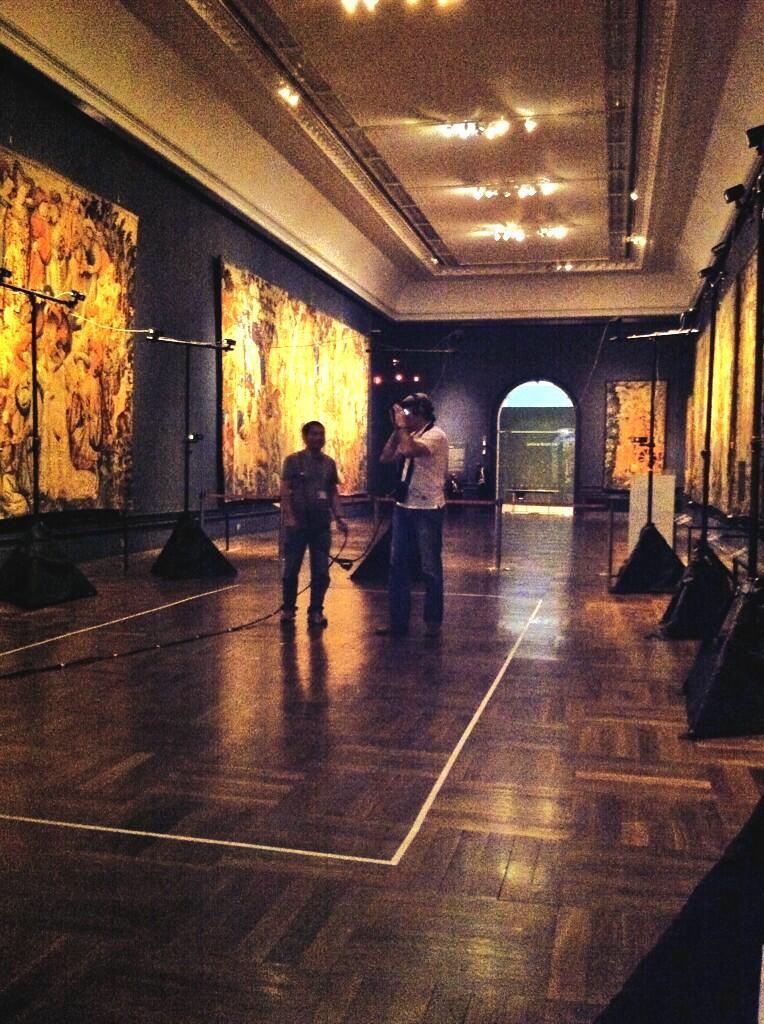Living conditions in a refugee camp or in a street devastated by a bomb sound abstract to the majority of us. What if technology allowed people to experience these scenarios in an immersive environment, reproducing real events through actual audio, video and photographs taken at the scene?
Nonny de la Peña calls this technology-driven opportunity “immersive journalism.” As clearly stated in the presentation of her latest work, through real time graphics from a game engine and the sense of presence evoked through high-resolution virtual reality goggles and compelling audio, Project Syria “takes the audience to the real events as they transpire on the streets of Aleppo and at a refugee camp.”
Sounds ambitious? Yes. Does it work? Yes. How do I know it? Because I’ve tried it out.
Originally commissioned by the World Economic Forum and created at the University of Southern California School of Cinematic Arts, Project Syria was showcased at the last edition of Sheffield Doc Fest a few days before I got my first ride on this new piece of high-tech storytelling.
I first met Nonny de la Peña on 17 June at London’s Interactive Factual Narrative meetup, where she presented an overview of an upcoming exhibition she was setting up that same day. Three days later I had the chance to experience some sequences of Project Syria at the Victoria and Albert Museum, where it was hosted as a special event from 18 to 22 June, during Refugee Week.
At the V&A Project Syria was on display in the Tapestries Room. Surely a striking contrast compared to the technology involved, but a perfectly reasonable venue: after all, isn’t tapestry an ancient visual form of telling stories?
Given my background in journalism, I was genuinely intrigued by what I read in the presentation of the event: “Project Syria is part of a new avenue of journalism which explores the sense of presence that new virtual technologies allow. Utilizing eyewitness video, audio, and photographs to carefully reconstruct what happened, immersive journalism stories are portrayed in life-size detail. These new technologies give audience the chance to fully engage, with unprecedented access to the sights, sounds, feelings and emotions of the story.”
As you can see in the video below, the demonstration took place in a fenced off area controlled by several cameras. In that space V&A visitors could safely try the wearable device and experience three immersive scenarios: the loud and peaceful streets of Aleppo; that same setting devastated by a bomb, with injured pedestrians and screaming casualties; and a grim refugee camp, crowded with tents and refugees standing silently around the viewer.
I must admit that I am not a gamer and I have never experienced a game play involving oculus rift. So for me the closest immersive environment I could think of while wearing the goggles was immersive filmmaking within a movie theatre – a sort of small scale IMAX experience. Yet, given that the technology is quite new and that this was my first try, I think I lack the proper vocabulary to describe it.
The sense of displacement was immediately tangible and from beginning to end I felt the impulse to physically interact with what I was seeing around me. More than once I also felt the need to cast a sidelong glance under the goggles, just to make sure of where my body was while I was walking. But what really hit me the most was the sense of time slowing down: I wore the goggles for no more than 4 minutes and I had the feeling of spending at least 10 immersed in Project Syria.
Applications of this technology to storytelling are endless and experiencing a wearable device re-designed for humanitarian purposes is very intense. Maybe increasing the intensity will help us all to feel better.
For details and updates check Immersive Journalism’s official website.
Credits: Photos and video taken by Nicolò Gallio at V&A on 20 June 2014. Clip Project Syria: An Immersive Journalism Experience © 2014 Immersive Journalism and USC School of Cinematic Arts.


Comments are closed.